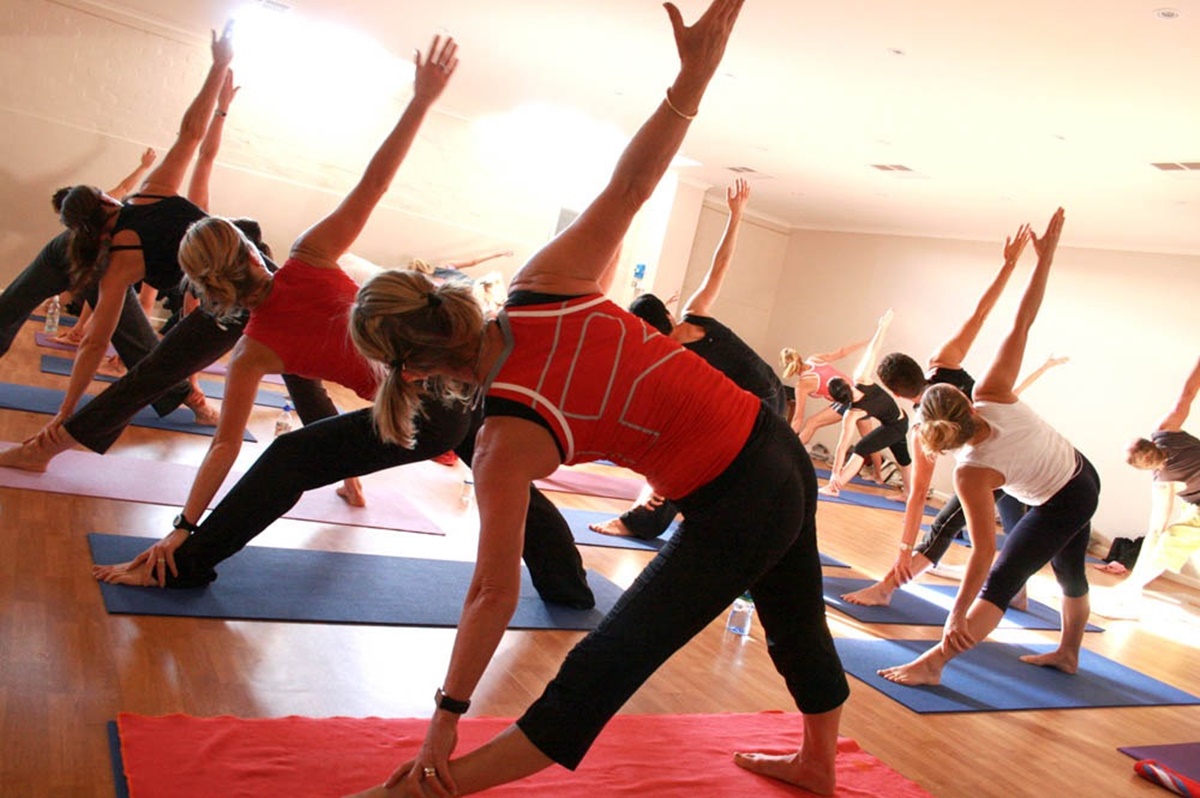Home>Misc>Featured>How Soon After Breast Augmentation Can I Workout


Featured
How Soon After Breast Augmentation Can I Workout
Published: August 12, 2023
Featured: Find out when it's safe to hit the gym after your breast augmentation procedure. Learn about post-op exercise guidelines for a speedy recovery.
Introduction
So, you’ve made the decision to undergo breast augmentation surgery. Congratulations! This procedure can help enhance your self-confidence and achieve the desired appearance you’ve always wanted. However, it’s natural to have questions and concerns about the recovery process, especially when it comes to returning to your regular exercise routine.
Physical activity and exercise play an important role in maintaining a healthy lifestyle, so it’s understandable that you’d want to resume your workouts as soon as possible after breast augmentation. But before hitting the gym, it’s essential to understand the factors involved and follow proper guidelines to ensure a safe recovery.
In this article, we will discuss the various factors to consider before starting to work out after breast augmentation surgery, the recommended post-operative recovery period, and guidelines for returning to physical activity.
Remember that every individual’s healing process may vary, and it’s crucial to consult with your plastic surgeon for personalized guidance based on your specific case. With patience, proper care, and following your surgeon’s instructions, you’ll be back on your feet (and in the gym) sooner than you think!
Factors to Consider Before Starting to Workout
While breast augmentation surgery is a common and relatively safe procedure, it’s still important to take necessary precautions before resuming your exercise routine. Here are a few factors to consider:
- Healing Process: The first and foremost factor to consider is the healing process. After breast augmentation, your body needs time to recover from the surgery. The healing period varies from person to person and is influenced by factors such as the surgical technique used, the type of implants, and individual healing capacity.
- Incision Healing: Proper healing of the incisions is crucial before engaging in any vigorous physical activity. The incisions made during the procedure need sufficient time to close, and any strain or stress on the incision area can increase the risk of complications and delay the healing process.
- Implant Settling: It’s important to allow your implants to settle into their final position before participating in activities that could potentially disrupt their placement. Your surgeon will provide guidelines on how long you should wait before engaging in activities that may directly affect the implant position.
- Pain and Discomfort: Breast augmentation surgery typically involves some level of pain and discomfort during the initial recovery period. Engaging in intense physical activities too soon can exacerbate these symptoms and delay the healing process. Listen to your body and give it the time it needs to heal.
- Surgeon’s Instructions: Always follow your surgeon’s instructions and recommendations regarding your post-operative care and recovery. They have the expertise and knowledge to guide you through the healing process and determine when it’s safe to resume your workouts.
It’s important to note that rushing back into your exercise routine too soon can lead to complications, such as implant displacement, increased swelling, and prolonged recovery time. Patience and proper healing should be your top priorities. Remember, taking the necessary time to heal properly will ultimately benefit your long-term results and overall well-being.
Post-Operative Recovery Period
After breast augmentation surgery, the recovery period is an essential phase that allows your body to heal and adjust to the changes made during the procedure. The duration of this recovery period can vary depending on several factors, including the surgical technique used and your body’s individual healing capacity. It’s imperative to understand the general timeline of the recovery process to ensure a smooth and successful healing journey.
In the immediate post-operative period, you will experience some swelling, bruising, and discomfort around the surgical incision sites. Your surgeon may prescribe pain medication to manage any discomfort experienced during this time. It’s crucial to follow their instructions regarding medication usage and dosage.
During the first week of recovery, it’s essential to prioritize rest and allow your body to heal. Engaging in any strenuous activities, including workouts, can potentially disrupt the healing process. Adhering to proper post-operative care, such as wearing a supportive bra and avoiding heavy lifting, is crucial during this initial healing phase.
As the weeks progress, you will gradually start to feel better and see improvements in your physical condition. The swelling and bruising will subside, and the incision sites will begin to heal. However, it’s important to note that even though you may feel better, the internal healing process is still ongoing.
Most surgeons recommend avoiding any high-impact activities, such as running or weightlifting, for at least six weeks after breast augmentation surgery. This timeframe allows for complete healing of the incisions, reduction of swelling, and ensures that the implants have settled into their final position.
Keep in mind that every individual’s recovery process may vary, and it’s essential to follow your surgeon’s specific instructions. They may customize the recovery timeline based on your unique circumstances. Communicate any concerns or questions you have with your surgeon or their medical team to ensure proper guidance throughout the recovery period.
Remember, patience and self-care are crucial during the recovery phase. Resuming physical activities too soon can have adverse effects on your healing process and potentially lead to complications. Give your body the time it needs to recover fully, and you’ll be rewarded with beautiful results and a renewed sense of self-confidence.
Return to Physical Activity Guidelines
Returning to physical activity after breast augmentation surgery requires a gradual and cautious approach to ensure the safety of your healing process and the long-term success of your results. Here are some general guidelines to follow:
- Consult with your surgeon: Before resuming any physical activity, it’s crucial to consult with your plastic surgeon. They will evaluate your progress and provide personalized recommendations based on your specific case. Following their advice is essential for a safe and successful return to exercise.
- Start gently: In the initial stages of returning to physical activity, focus on low-impact exercises that do not strain the chest area. Walking and light aerobic exercises can help gradually build strength and stamina without putting excessive stress on your healing incisions or implants.
- Avoid upper body exercises: It’s important to avoid any exercises that directly involve the chest muscles, such as push-ups or weightlifting, for at least six weeks after surgery. These activities can put pressure on the chest area, potentially causing implant displacement or affecting the healing process.
- Listen to your body: Pay attention to how your body feels during and after exercise. If you experience any pain, discomfort, or swelling, it’s essential to stop and rest. Overexerting yourself can hinder your recovery and increase the risk of complications.
- Gradually increase intensity: As your healing progresses, you can gradually increase the intensity of your workouts. However, it’s vital to continue avoiding exercises that directly strain the chest muscles. Gradually incorporate activities such as yoga or Pilates to improve flexibility and core strength.
- Wear a supportive sports bra: Choose a well-fitting, supportive sports bra that minimizes breast movement during exercise. This helps protect your healing incisions and provides added support to the breasts to prevent any discomfort or complications.
- Stay hydrated: Drinking plenty of water before, during, and after exercise is crucial for your overall well-being and aids in the recovery process. Proper hydration supports healthy circulation and helps your body heal more efficiently.
Remember, every individual’s recovery may vary, and it’s important to listen to your body and follow your surgeon’s guidance. Respect the healing process and the recommended timeline for returning to more intense physical activities. Slow and steady progress is key to ensuring a safe and successful return to your regular exercise routine after breast augmentation surgery.
Recommended Exercises Post-Breast Augmentation
After breast augmentation surgery, it’s important to choose exercises that promote overall fitness and strength while minimizing strain on the chest area. Here are some recommended exercises that can be incorporated into your post-operative workout routine:
- Lower body exercises: Focus on exercises that target the lower body, such as squats, lunges, and leg presses. These exercises help to strengthen and tone the lower body muscles without putting strain on the chest area.
- Cardiovascular exercises: Engage in low-impact cardiovascular exercises, such as brisk walking, cycling, or swimming. These exercises promote cardiovascular health without causing excessive pressure on the chest and can be a great way to gradually increase your endurance and fitness level.
- Core exercises: Strengthening your core muscles is crucial for overall stability and proper posture. Incorporate exercises like gentle Pilates, planks, or standing oblique twists to target the abdominal and back muscles.
- Pilates and Yoga: Pilates and yoga are great options for improving flexibility, balance, and posture. Focus on gentle and modified exercises that don’t involve intense chest stretching or pressure.
- Resistance band exercises: Resistance bands can be a useful tool for strength training. Strengthening exercises like bicep curls, tricep extensions, and lateral raises can be safely performed with resistance bands, as they don’t put strain on the chest area.
- Light weightlifting: Once you’ve received clearance from your surgeon, gradually introduce light weightlifting exercises. Be sure to focus on exercises that target the lower body, back, and arms while avoiding exercises that directly engage the chest muscles.
Remember to start with low weights and gradually increase the intensity as your healing progresses. It’s important to maintain proper form and listen to your body. If any exercise causes discomfort or pain, stop immediately and consult with your surgeon.
It’s recommended to work with a qualified fitness professional who has expertise in post-operative exercise to create a customized workout plan that considers your specific needs and limitations. They can guide you through the proper techniques and modifications to ensure a safe and effective workout routine.
As always, consult with your surgeon before attempting any new exercises and follow their recommendations based on your individual healing progress. Properly incorporating these exercises into your routine will help you maintain your overall fitness level without compromising the results of your breast augmentation.
Common Concerns and FAQs
It’s natural to have questions and concerns about resuming physical activity after breast augmentation surgery. Here are some common concerns and frequently asked questions:
- When can I start exercising after breast augmentation? The timing can vary, but most surgeons recommend waiting at least six weeks before engaging in intense physical activities. It’s important to follow your surgeon’s specific instructions and gradually ease back into your workout routine.
- Can exercise affect the results of my breast augmentation? If you follow the recommended guidelines and listen to your body, exercise should not negatively affect the results of your breast augmentation. However, it’s crucial to avoid exercises that put direct strain on the chest area to prevent complications such as implant displacement.
- When can I go back to lifting weights or strength training? It’s typically recommended to wait at least six weeks before engaging in weightlifting or strength training. Start with light weights and gradually increase the intensity to avoid strain on the chest muscles and ensure a proper healing process.
- Will exercise cause my implants to shift or rupture? Following the recommended guidelines and avoiding exercises that directly strain the chest muscles significantly reduces the risk of implant displacement or rupture. However, it’s important to consult with your surgeon for specific advice based on your individual case.
- Can I do high-impact exercises, such as running or jumping? High-impact exercises should be avoided for at least six weeks after surgery to allow for proper healing and reduce the risk of complications. Engaging in activities that involve repetitive or excessive bouncing can put strain on the chest area.
- Is it normal to experience pain during exercise after breast augmentation? Mild discomfort or soreness may be experienced during the initial stages of returning to exercise. However, if you experience excessive pain or discomfort that persists, it’s important to stop and consult with your surgeon to ensure there are no complications.
Remember, everyone’s post-operative experience and healing process can vary. It’s crucial to discuss any concerns or questions with your plastic surgeon, as they can provide personalized guidance and address any specific concerns you may have. By following the recommended guidelines and listening to your body, you can safely resume your exercise routine and enjoy your enhanced self-confidence post-breast augmentation surgery.
Conclusion
Returning to your regular exercise routine after breast augmentation surgery requires patience, caution, and adherence to proper guidelines. It’s crucial to prioritize your healing process and follow the recommendations provided by your plastic surgeon. By doing so, you can ensure a safe and successful return to physical activity while maintaining the beautiful results of your breast augmentation.
Factors such as the healing process, incision healing, implant settling, and the guidance of your surgeon all play a vital role in determining when it’s safe to resume workouts. It’s important to listen to your body and gradually increase the intensity of your exercises over time.
Remember, lower body exercises, cardiovascular workouts, core strengthening exercises, Pilates, and yoga are excellent options for maintaining fitness during the recovery period. It’s important to avoid exercises that directly strain the chest muscles and to wear a supportive sports bra for added comfort and protection.
As you navigate the post-operative recovery period, it’s normal to have concerns and questions. Consulting with your plastic surgeon and following their personalized guidance is essential. This will help address any specific concerns and ensure that you’re on the right track to a successful recovery.
Give yourself the time and care you need to heal properly. With patience and adherence to the recommended guidelines, you’ll soon be able to enjoy the benefits of your breast augmentation and resume your regular exercise routine with confidence and a renewed sense of self.







